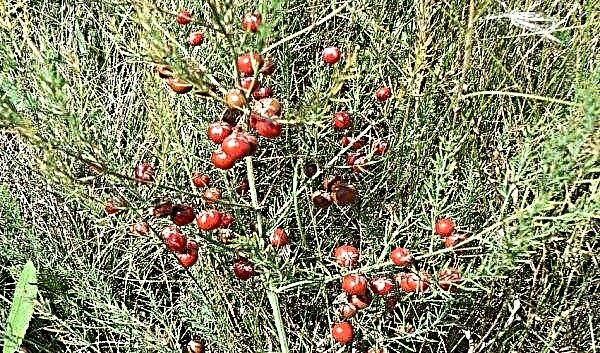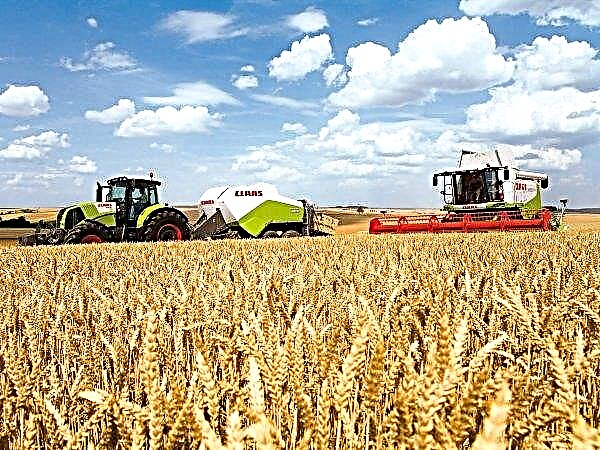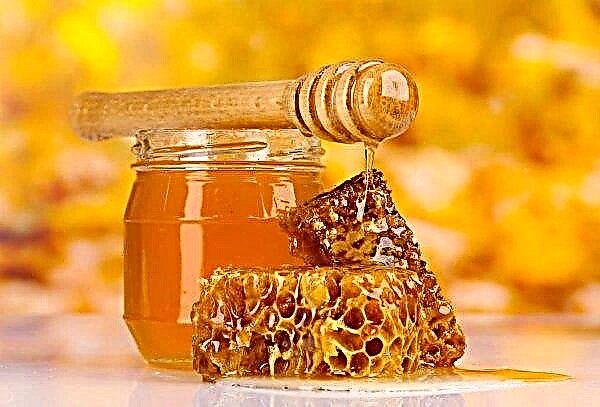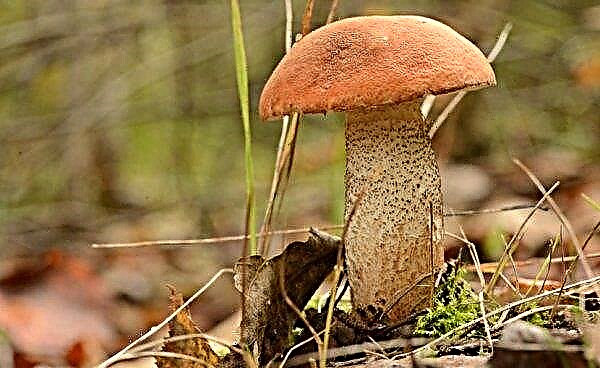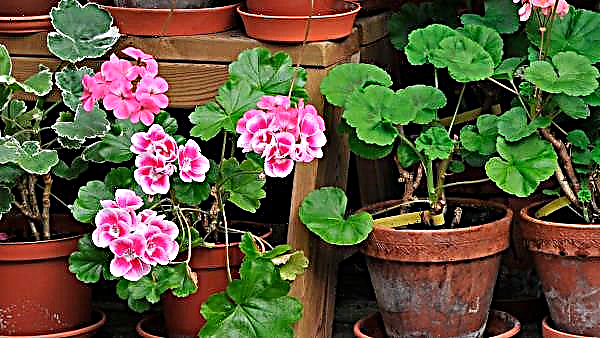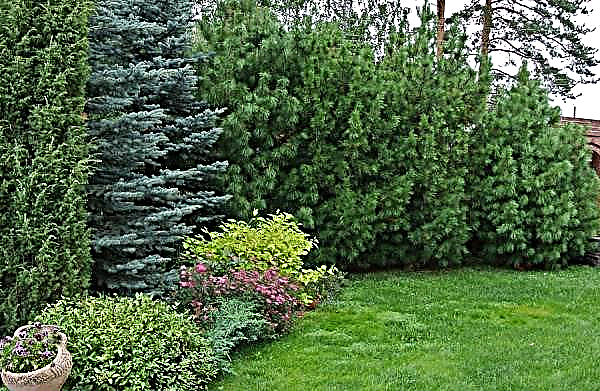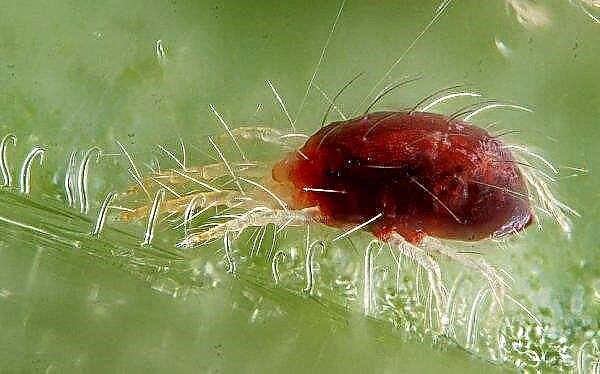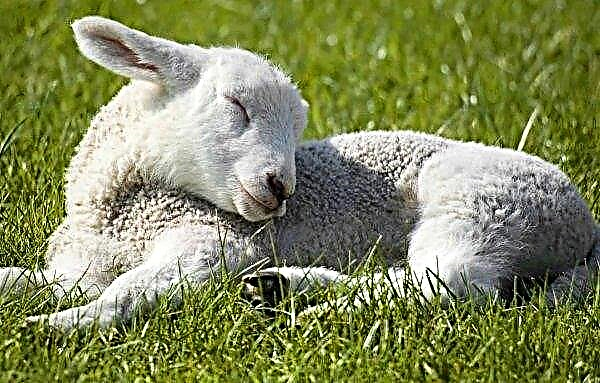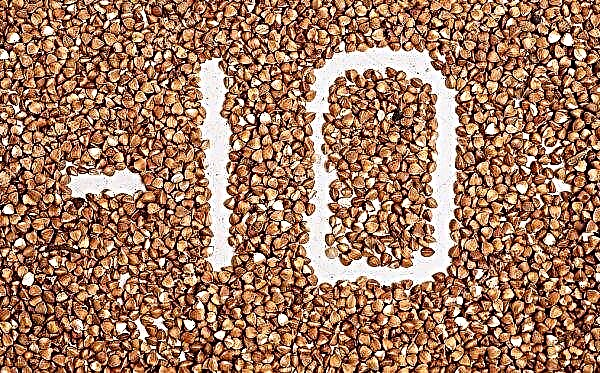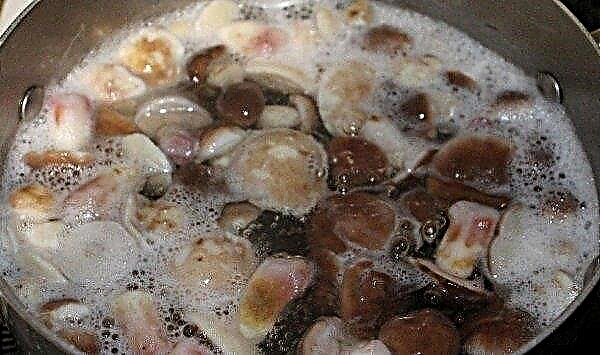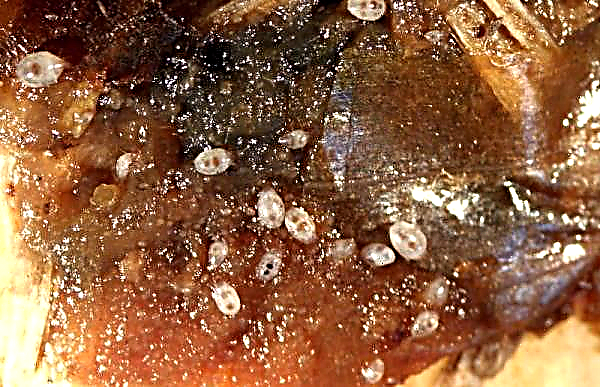Being the largest vegetable in the world, pumpkin is appreciated not only for its size, but also for its exceptionally rich nutritional characteristics. Its taste and beneficial properties motivate breeders to develop new varieties and hybrids. One of the most popular pumpkin varieties in the middle climatic zone is Volga gray pumpkin, which will be discussed later in the article.
Botanical Description
This culture belongs to mid-season, has large fruits weighing about ten kilograms. On average, about four months pass from germination of seedlings to the formation of fruits at the stage of removable maturity. The high shelf life of the Volga pumpkin allows you to collect and store its harvest in large quantities, as well as transport it over considerable distances without losing its presentation.
Important! The fruits of the Volga gray variety must ripen on the lashes to achieve the best taste characteristics. Pumpkins, ripened at home, after collection, have a lower nutritional value and a poor vitamin composition.
Young shoots of pumpkin are formed from seeds or seedlings, thus forming a medium-sized bush with side lashes up to four meters long. Parts of the lashes that are closer to the stem are distinguished by a dark green tint with longitudinal stripes of almost black color. The leaf plates are dense, saturated green with a moderate edge; as the fruits ripen, they lose their stiffness, the division of sheets into segments becomes noticeable. Fruits differ in such characteristics:
Fruits differ in such characteristics:
- have a round shape, slightly flattened at the poles;
- the skin is smooth, uniform and elastic, without visible spots, stripes, ribs, light gray;
- segmentation occurs when the fetus ripens - the larger it is, the better the segments are expressed;
- the pulp of a ripe vegetable has a deep orange hue, which can darken during storage;
- the thickness of the pulp layer reaches six centimeters;
- medium-sized seeds (up to 3 cm), can be used as food.
Planting and growing at home
Depending on the area in which it is planned to grow pumpkin, it will be necessary to carry out various agricultural activities to provide the crop with optimal growth conditions.
Soil and crop rotation requirements
Optimum Volzhskaya gray pumpkin takes root on loamy soils. Sandy loam soils due to their low fertility have to be significantly fertilized. Clay and acid substrates are not suitable for growing this vegetable, since under conditions of limited nutrition and insufficient supply of oxygen to the root system, it forms a hard, thin flesh. Lowland areas of the garden accumulate a large amount of moisture during the rainy season, so pumpkins should be planted, if possible, on elevated terrain. With excessive watering, the root neck of the bushes is affected by rot, and the flesh has a watery, unsaturated taste. The soil should be structural, loose, fertile, as well as warm well. Given the high nutrient requirements of pumpkin, it can be called a crop demanding on its predecessors and neighbors.
Lowland areas of the garden accumulate a large amount of moisture during the rainy season, so pumpkins should be planted, if possible, on elevated terrain. With excessive watering, the root neck of the bushes is affected by rot, and the flesh has a watery, unsaturated taste. The soil should be structural, loose, fertile, as well as warm well. Given the high nutrient requirements of pumpkin, it can be called a crop demanding on its predecessors and neighbors.
It is best to grow this vegetable after:
- cruciferous - cabbage, radish;
- nightshade - potatoes, tomatoes;
- onion crops;
- bean herbs.
Did you know? Various varieties of pumpkins are cultivated by mankind, starting from the Y millennium BC. The homeland of this vegetable is considered the South American continent. In these areas, American archaeologists who studied the burial of the Peruvian Indians, found samples of pumpkin seeds dating back to the III millennium BC. e.
Optimal conditions
Being a heat-loving crop, the Volga gray pumpkin requires planting in soil heated to + 14 ... + 17 ° C, since lower temperatures provoke rotting of the seeds and prevent them from germinating. When choosing a place for planting seedlings or sowing seeds, you need to choose the sunniest side of the site, because this vegetable feels most comfortable at + 25 ° C. In this case, shading of the plot is not allowed, since the pumpkin is a southern melon crop, which should be exposed to direct sunlight during the whole daylight hours. As for soil moisture, then during a period of intensive increase in the mass of fruits and leaf apparatus, it should be kept within 80%. Values exceeding those indicated have a negative effect on plants - the root system is formed horizontally in the upper layers of the soil and is affected by pests and mucus. Humidity during the entire period of growth and maturation of the plant should be 75–80%, this indicator can be regulated by changing the frequency of watering.
As for soil moisture, then during a period of intensive increase in the mass of fruits and leaf apparatus, it should be kept within 80%. Values exceeding those indicated have a negative effect on plants - the root system is formed horizontally in the upper layers of the soil and is affected by pests and mucus. Humidity during the entire period of growth and maturation of the plant should be 75–80%, this indicator can be regulated by changing the frequency of watering.
Features of sowing seeds
Preparation of seeds for sowing is carried out as follows:
- Sorting. Light and empty seeds are removed from the total mass, and large, full seeds are sent for disinfection.
- Disinfection. Seeds are laid out in a thin layer on a platter, poured with a weak solution of potassium permanganate and kept for half an hour, and then washed under warm water and wrapped in moist warm gauze.
- Germination. The fabric is placed in a warm, shaded place and incubated for two days until the seeds peck.
- Hardening. It is used to increase the resistance of seeds to temperature extremes and return frosts. Wet tissue with seeds is placed on the bottom shelf of the refrigerator for up to three days.
- Top dressing. It is produced by wood soot, which is distributed on gauze at the rate of 5 g of soot per 30 seeds.
Sown seeds in pre-prepared soil - it can be either a store mix for Pumpkin, or a self-prepared substrate (peat, sawdust and humus in a ratio of 2: 1: 1, respectively). Before planting the seed material, the soil is moistened with settled warm water, and then the seeds are planted into it to a depth of 4 cm, observing a distance of 5 cm between rows.
Seedling Care
If the Volzhsky gray variety is planned to be grown in the northern region, it is necessary to cultivate it with seedlings. Since the root system of the pumpkin is quite fragile and does not tolerate picking, it is necessary to sow the material in peat tablets, two seeds per tablet. After sowing, boxes with tablets should be covered with a film or glass to create greenhouse conditions. In this case, the daytime temperature should be in the range + 18 ... + 23 ° C, and the night temperature - from +15 to + 17 ° C.
Important! So that the emerging pumpkin sprouts do not begin to stretch rapidly, on the third day after germination they reduce the total temperature (both day and night) by 5–6 ° C. After this, the daily temperature begins to gradually rise, no more than 1 ° C in three days.
Watering is moderate, as the excess moisture of the soil and its drying out are harmful to young plants. The first top dressing of seedlings is carried out one and a half weeks after the seedlings are biting. For this, a nitrophosque solution is added to the substrate at the rate of 5 g of fertilizer per 3 l of water. For those who prefer to use organic fertilizers, an infusion of flowers of a mullein plant, aged for 4 hours, is suitable (the ratio of water to inflorescences is 1:10). As for lighting, the daylight hours for plants should be at least 12 hours a day. It is necessary to keep seedlings on the windowsill on the south or east side of the apartment, and with the onset of the evening - to illuminate with fluorescent lamps. In open ground, seedlings must be planted after three true leaves appear on the stem.
As for lighting, the daylight hours for plants should be at least 12 hours a day. It is necessary to keep seedlings on the windowsill on the south or east side of the apartment, and with the onset of the evening - to illuminate with fluorescent lamps. In open ground, seedlings must be planted after three true leaves appear on the stem.
Planting seedlings in the ground
Seedlings are planted in previously loosened soil on which pumpkin-friendly predecessors were previously grown. It is recommended to conduct it during the period when the upper 15–20 cm of soil is warmed up to + 15 ° C, and the possibility of spring return frosts is excluded. The optimal time for planting pumpkins is considered to be the end of April or the beginning of May, the depth of planting is 5-6 cm.
Since the nutrition area of one bush is from 2 to 4 square meters. m, it is important to maintain the optimal distance between seedlings. Volzhsky gray variety is classified as bush, so the distance between the staggered holes should be at least 1.5 m, and between rows - 1.5–2 m. Two peat tablets with grown shoots are placed in one hole with a distance of about 4 cm apart. If the weather is cool at night, seedlings are covered with plastic wrap immediately after sunset and open after 8 a.m. As soon as a crust forms on the surface of the soil, it is broken and loosened in order to improve the flow of moisture and oxygen to the plants. After the seedlings are strengthened, weeding is done - in one hole one strong plant is left, from which the side shoots are nipped.
If the weather is cool at night, seedlings are covered with plastic wrap immediately after sunset and open after 8 a.m. As soon as a crust forms on the surface of the soil, it is broken and loosened in order to improve the flow of moisture and oxygen to the plants. After the seedlings are strengthened, weeding is done - in one hole one strong plant is left, from which the side shoots are nipped.
Features of further care
In order for the plants to give the maximum yield possible, they need to create comfortable conditions for the growth and formation of fruits.
Watering and feeding
Since the root system of the Volga gray pumpkin goes 3–4 m deep, this crop needs abundant but rare watering, the frequency of which is regulated as the soil dries. Soft rain water is best suited for this purpose. If watering is planned to be carried out with tap or spring / well water, then it will have to be preheated in tanks.
Did you know? Different varieties of pumpkins are divided into edible, decorative and technical. Tanks, vessels and even musical instruments are made from dense overripe fruits with hard peels. In some countries in Africa, there is a practice of producing motorcycle helmets from certain specially crafted pumpkin varieties.
Watering the pumpkin must be carried out basally, while adding water not under the root neck, but in a shallow groove around the bush so that the root system is not washed out of the soil. For watering, you should choose a period of morning or evening coolness - this will prevent the appearance of sunburn on foliage and fruits. Loosening the soil before irrigation to a depth of about 10 cm is mandatory. Regarding top dressing, it should be carried out regularly so that the Volga gray pumpkin does not deplete the soil. Depending on the fertility of the substrate, the frequency of fertilizer application must be regulated. If the pumpkin grows on soil rich in organic matter, then it must be fed three times from the moment of transplanting. Poor nutrient soils should be enriched every one and a half weeks during the vegetative period of pumpkin growth. The best fertilizer for this crop is potassium, it must be applied even when transplanting seedlings in the form of wood ash at the rate of 10 g per well.
Depending on the fertility of the substrate, the frequency of fertilizer application must be regulated. If the pumpkin grows on soil rich in organic matter, then it must be fed three times from the moment of transplanting. Poor nutrient soils should be enriched every one and a half weeks during the vegetative period of pumpkin growth. The best fertilizer for this crop is potassium, it must be applied even when transplanting seedlings in the form of wood ash at the rate of 10 g per well.
Fertilizers for feeding pumpkins are used:
- mineral;
- organic.
Pumpkin needs both types, they must be added in turn to maintain a balance of nutrients. The first feeding should be especially nutritious - for it, a solution of manure (1:10) or litter (1:20) is used. 0.4–0.5 L of top dressing is applied under each bush, then the fertilizer process is repeated every 1.5 weeks, making 1 liter after the beginning of flowering and 1.5 liters after the appearance of the fruit.
10-12 days after the first top dressing, mineral fertilizers are applied to the soil; superphosphate or potassium sulfate allows large, healthy ovaries to form. For every 5 l of water, 5 g of fertilizer is taken, then the plants are watered at the rate of 1 l of solution per bush. Nitrofoska, azofoska, "Rastvorin" are also popular among gardeners, which make at the rate of 1 g of fertilizer per 1 liter of water. Such dressings are used three times per season - immediately after planting, before flowering and after the formation of the ovaries. Fertilizing is recommended at the same time as watering - for this, draw shallow (up to 5 cm) grooves at a distance of 20 cm from the root neck of the bushes. A nutrient solution is poured into them, then the grooves are covered with earth. In the case of a long cloudy period, foliar top dressing is also carried out: Kemira-universal solution treats pumpkin plant foliage.
Fertilizing is recommended at the same time as watering - for this, draw shallow (up to 5 cm) grooves at a distance of 20 cm from the root neck of the bushes. A nutrient solution is poured into them, then the grooves are covered with earth. In the case of a long cloudy period, foliar top dressing is also carried out: Kemira-universal solution treats pumpkin plant foliage.
Soil cultivation and weeding
While the pumpkin lashes are not extended and the root necks are clearly visible, it is necessary to loosen the soil after each rain and heavy watering in order to avoid the appearance of a cracked soil crust. Simultaneously with loosening, weeding is carried out - weeds grown on the aisle are carefully pulled out of the fluffy soil.
Important! In total, during the vegetative period, it is necessary to carry out within seven weeds and loosening (every two weeks). Less pumpkin care will affect the harvest.
Immediately after transplanting seedlings, loosening can be carried out to a depth of 15 cm. After the first four weeks of growth, the depth should be reduced to 8–9 cm so as not to damage the upper layers of the root system of the pumpkin itself.
Bush formation
Sprawling lashes and leaves, even barren ones, require large amounts of nutrients. Pinching the pumpkin bush is necessary in order to direct the maximum amount of nutrients to the formation of fruits. Formation is divided into pinching and pinching: pinching is the removal of axillary processes, and pinching is the shortening of overgrown lashes. The formation of the bush is carried out in different ways, depending on whether the owner wants to get one especially large fruit or several portioned ones:
The formation of the bush is carried out in different ways, depending on whether the owner wants to get one especially large fruit or several portioned ones:
- If you plan to grow one fruit, then you need to pinch the lash of the main shoot immediately after the appearance of the first ovary, and then from time to time to pinch so that the bush is not too thick.
- To collect 3-4 fruits from one bush, it is necessary to wait for the formation of ovaries, then leave the required number, on each shoot count five leaves from the last ovary and pinch the lash.
- To get a large number of small pumpkins, it is necessary to lay lashes along the beds, cleaning them from excess leaves. Every 1.2–1.5 m, shoots should be sprinkled with moist soil to form additional roots. This method of minimal formation does not guarantee the ripening of all fruits, but allows you to collect a rich crop in quantity.
Possible growing difficulties
The fruits and shoots of pumpkins can be affected by various diseases and pests - this negatively affects the fruitfulness of the culture. There are various methods of dealing with these factors, as well as preventive measures to prevent infection.
Diseases of the Volga gray pumpkin are as follows:
- Bacteriosis. It appears in the form of brown spots of irregular shape on the leaf plates, which eventually dry out, and holes form in their place. The fight against bacteriosis is the removal of diseased shoots, their subsequent burning. Prevention is carried out by treating plants with a 1% solution of copper sulfate in milk of lime.
- White rot. It affects mainly fruits and leaves, which are covered with white coating, and then become soft and begin to rot. The cause of the disease is a fungus, which develops especially rapidly with high humidity and cloudy weather.To stop the spread of rot, it is necessary to remove all the affected areas of plants on a hot sunny day, treat the cut points with crushed charcoal, and burn the affected leaves and fruits.

- Powdery mildew. It occurs on sheet plates in the form of a granular coating of white color, which gradually covers the entire plate and leads to its drying. To get rid of the fungus that forms fruiting bodies on foliage, it is necessary to cut and destroy the affected leaves, and spray the bushes with colloidal sulfur or sodium phosphate at the rate of 20 or 50 g per 10 liters of water, respectively.
Did you know? Beginning in the 19th century, farmers regularly compete in the United States to grow the largest pumpkin. To this day, an absolute record is the figure of 1,689 pounds (760 kg), which was established in 2007 by a farmer from Iowa.
The following pests can affect the pumpkin:
- Spider mite. A small insect (up to 0.3 mm long), wraps around with a whitish web the underside of pumpkin foliage. The affected foliage is covered with so-called "marble" spots, dries and falls. To prevent the occurrence of this pest allows timely harvesting of weeds, crop rotation, regular spraying with a decoction of onion husks (300 g of husk per 10 liters of water). To destroy a tick that has already appeared, the plants can be treated with a 20% solution of chloroethanol.

- Gourd aphids. An insect up to 2 cm long with a dark green oval-shaped body. This pest is dangerous because it affects not only foliage, but also inflorescences, which can lead to the destruction of the crop. Preventive measures in this case include the harvesting of plant debris from under the bushes, the destruction of weeds. You can get rid of melon aphids by spraying plants with a 10% solution of malathion.

Harvest dates and storage
Mid-season Volga gray pumpkin ripens within four months. Only fruits ripened on lashes will have high palatability and nutritional qualities. Harvesting of fruits begins in mid-September and lasts until the first frost - the harvesting time largely depends on the size of the fruit and climatic conditions. Frosts negatively affect the pumpkin's keeping quality, so the best solution would be to take the whole crop, and then ripen the fruit at home. Harvesting fruits must be carried out on relatively warm weather days.
To separate the pumpkin from the whip, use a secateurs or a garden knife, while using the remaining stalk to carry the fruit is not recommended. This will damage the flesh in the area of the stalk and shorten the shelf life of the pumpkin. Fruits should be transported to the storage location carefully, since any scratches and cracks on the peel reduce the shelf life of the fruits. Before laying pumpkins for storage, it is necessary to clean them of soil residues, and for unripe fruits, perform ripening in a warm, dry room.
The optimal temperature for storing ripened fruits is from +10 to + 13 ° C. They need to be laid out on a woven base or wooden pallets so that they do not touch each other and the walls. They also make sure that the room is well ventilated and daylight does not penetrate into it. Volga gray pumpkin is considered one of the most popular representatives of Pumpkin. It is characterized by unpretentious care, excellent keeping quality, high taste and nutritional value, which allows you to use these fruits for diet and baby food.




